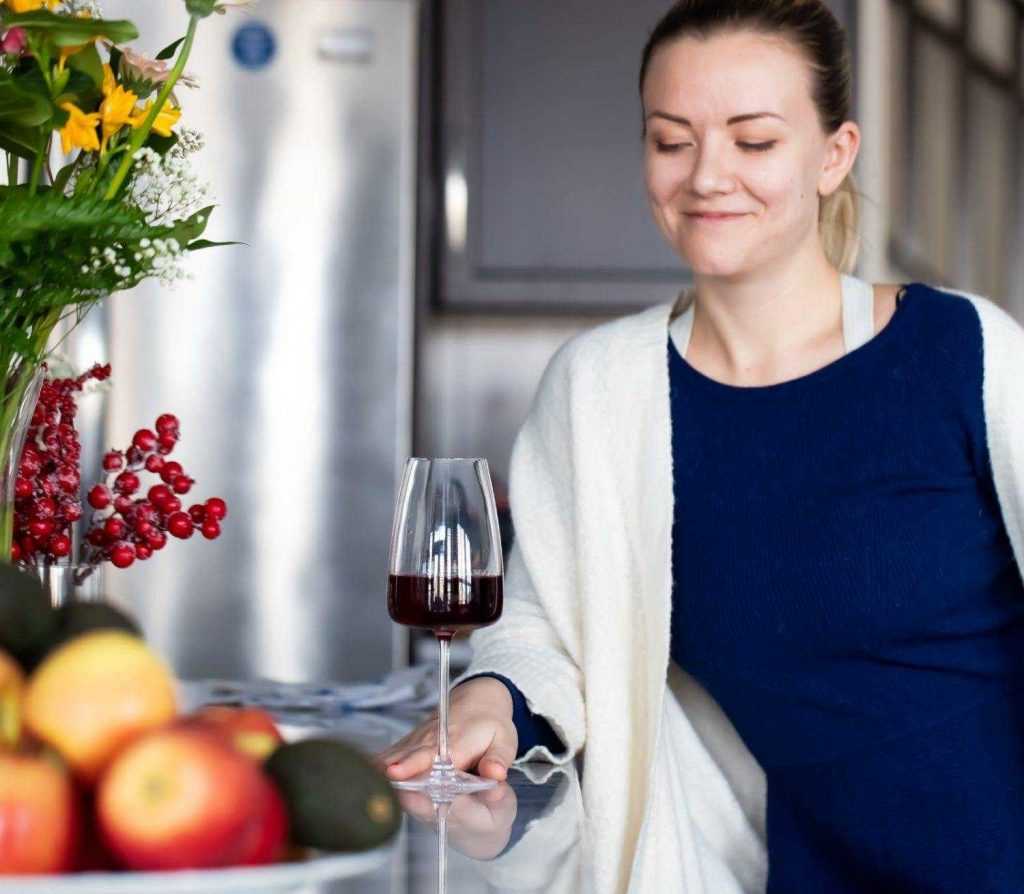How to pick a good wine in a store like a pro? Tips & tricks that pro wine tasters use to choose wine.
Wine stores can be so intimidating at times. Those endless shelves of bottles meticulously arranged by regions and grapes. Here is an Italian Pino Grigio on your right and a French Semillon on you left. Oh, wait! Maybe you should go for a German Riesling??? Riesling label looks nice with a cute little dachshund. Hmm… Perhaps it’s not professional enough for a good wine. Wait! What about the price and the vintage? Is 30 bucks enough for a good Riesling, or too much? Was 2016 a good year? HEEEELP!!! Oh God… I’m starting to have a panic attack just by listing all these variables. No worries! I’ve got you! Here are 5 tips on how to pick a good wine easily: #1 Don’t be fooled by the price! Expensive price tag does not necessarily come along with the best quality. In fact, I strongly recommend NOT to go for the high-priced wines at the beginning of your wine-tasting career 🙂 It is very likely, that you will not appreciate them just yet. Instead, look at the middle range for now. Medium-priced wines, that’s where you are more likely to find your gem at the moment. *you CAN discover superb wines at steal prices, but that usually requires preparation and a background knowledge. #2 Know what you are going to pair your wine with, in other words what are you having for dinner tonight? I cannot stress this enough, but the food that you have with your wine is an extremely important factor in whether you are going to enjoy this wine at all! The flavour profile of the food needs to complement the flavour profile of the wine, otherwise it will ruin both. Here are a few simple flavour combinations that always work: acidic foods call for acidic wine; wine always needs to be sweeter than the dessert (continuing to drink your main course wine with the just served dessert is a classic way to destroy the wine AND the dessert); salty and spicy foods are better with sweeter wines; fatty dishes go along just well with acidic and/bitter wines. It may all sound complicated, if you don’t know how this particular bottle of wine tastes… Just turn over the bottle and read the back label, winemakers usually include this info there. *Bonus tip! Foods and wines from the same region usually go along well. #3 Vintage (year), Region & Grape. Good wines typically include at least 2 of these 3 items on their label. If the bottle that you have in your hands does not have this info, this is not because the wine producer is just too shy to brag about it. Trust me on this, he definitely would, if he knew himself. It simply means this wine was gathered across several years from all around the country or even several countries and obviously includes a combination of grapes… just think of the logistics of all these… It may be ok, but I personally would not bet on it. #4 Stare closely at the front label of the wine and look for the PDO (Protected Designation of Origin), or the PGI (Protected Geographical Identification). All the wines produced in the European Union, are obliged by law to include this geographical identification on bottles. If you are holding a bottle of French wine, search for AOC or Appellation d’Origine Contrôlée somewhere on its label. If the bottle is from Italy – DOC (Denominazione di Origine Controllata) or DOCG (Denominazione di Origine Controllata e Garantita). Spain – DO (Denominación de Origen) and DOCa (Denominación de Origen Calificada). Germany – Prädikatswein and Qualitätswein terms. Should your chosen bottle contain one of these phrases on the label, it means that the wine in the bottle was made of the grapes from a specific region in this country and that it underwent more quality checks than a wine in the bottle that does not contain this phrase. #5 Be a tech guru, use mobile apps and read reviews. You are not alone in this wine game, there are plenty of people who had already tasted this particular wine that you are struggling with and left a review online. Your job is to download the app of your choice (I personally use Vivino for this), scan the label, check the overall score and read the reviews. All of this you can do right in the liquor store. So, switch your 4G, LTE or whatever that you are using ON and get to work! *You can also find food pairing suggestions on Vivino (see tip #2 above) 😉 If you are still reading at this point – THANK YOU! Was it useful?… Do you know how to pick a good wine now? HERE is a post of mine about wine that you may enjoy reading as well. [siteorigin_widget class=”WP_Widget_Media_Video”][/siteorigin_widget]

